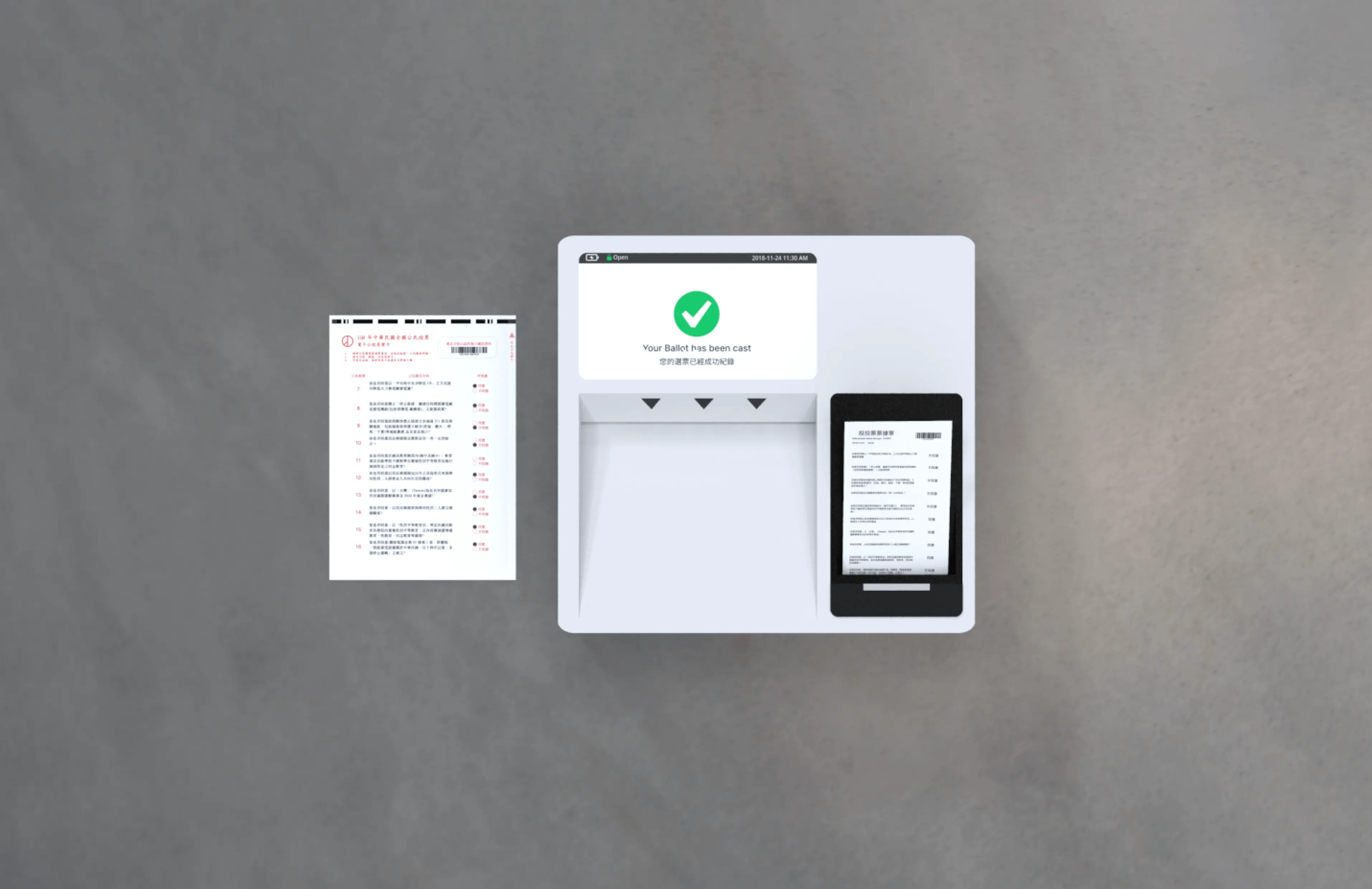

How do we design an e-referendum device that the people of Taiwan can trust and that is easy to use regardless of their digital skills?
By referring to three different types of voting machines in the United States, India, and the Philippines, we designed an e-referendum design for Taiwan and tested it for usability.In the end, the Model B "Push-Button EVM" prototype was found to be the easiest to use, took the least amount of time, and was the most trusted.
UX Research, UX Design, Prototyping, Experiment
CHIA-HSU HAUNG, VICENT HSIAO, HSIAO YU-TING
2019.09 - 2019.12
TAICHI 2021 Poster
In the Taiwan’s 2018 election and referendum, the long queuing and voting process caused a great deal of disturbance to the public. The Central Election Commission(CEC) has proposed the use of electronic voting devices in the future.This research is focus on the usability of the voting machine as a reference in planning the system, looking for the most suitable and trust machine design for Taiwanese citizen.
We designed three different prototypes by referring to the existing voting devices in the U.S., India, and the Philippines, and conducted usability tests. The test subjects included people of different digital usage levels, ages, and ethnic groups, and were interviewed after the test. This will ensure that the future e-voting equipment can avoid the difficulties caused by the digital gap, and reduce the learning time and error rate when operating.
In 2020, about seven countries in the world have officially adopted electronic voting machines nationwide. Among them, only Estonia use online voting system, while most of the other countries use offline offline voting device. The offline electronic voting machines can be classified into three categories: direct electronic DRE, simple EVM, and optical scan OPT.In this study, we the prototype machine refers to ES&S iVotronic(USA), VVPAT-EVM (India)and Smartmatics SAES-2000(Philippines).
We use low-cost material to simulate e-voting device, like iPad mini, cardboard box, foam case, light strips, smartcard reader, and printer. The voting interface is design by AxureRP, which can record data during usability testing.
Direct electronic DREs can be voted on using a voting machine with a touch screen. You start the machine with your voter eligibility card and then answer on the touch screen, one question per page, switching between the previous and next page. Before the question is completed, there will be a page showing the result of the answer just given. After confirming the answer, send it out to complete the answer.
The referendum question is located next to the button on the Simle EVM. When the light in the upper left corner reads “Election in Progress” in green, voters use the “Agree/Disagree” button on the machine to cast their ballots. At the same time, the VVPAT will print out the ballot paper and drop it into the box when the window lights up for three seconds.
Optical OPT uses a card scratch pad similar to the one used for exams. When people mark their choices in the circle, they can insert their ballot cards into the referendum reader and scan them.
Fifteen respondents contain three different kinds of voters, concluding “Normal Voter”(N=5), “First-Time Voters”(N=5) and “Digital Disadvantage Voters”(N=5). Respondents are voluntary and recruited from local Facebook groups in Taiwan.
Overall, Prototype B - Push-Button EVM took the least time to operate, had a relatively low error rate, the highest relative trust, and the highest SUS score (69), and scored absolutely high across all age and digital ability groups. Therefore, it is recommended that CEC will design the machine on the voter side in the direction of easy EVM.
According to the observation of the operating time of different groups, the first voters spent the least time in operating the three types of machines. The digital disadvantaged group spend the most time, while the rest of the groups are in between.
Unlike paper ballots, electronic voting machines can be used to cast invalid ballots in a variety of ways, such as deliberately overstamping or stamping outside the circle. Therefore, electronic voting devices should be designed with a disablement button or other clear indication so that voters know they have the right to choose “disablement/no answer” with the machine.
In the case of naturalized foreigners, such as newcomers, electronic voting devices offer greater flexibility than paper-based devices in providing multilingual voting. It is recommended that the CEC consider the possibility of multi-lingual voting devices in the United States.
Some of the reference models of the prototypes (Prototype B and C) do not have an accessible design. Therefore, it is suggested that the CEC should include Braille or announcer design in the future design of the official machine. In addition to allowing the visually impaired to vote without assistance and privacy, we learned during the interviews that the ability of the new residents to hear Mandarin is better than that of reading, so the use of an announcer can be designed to reduce misjudgment.